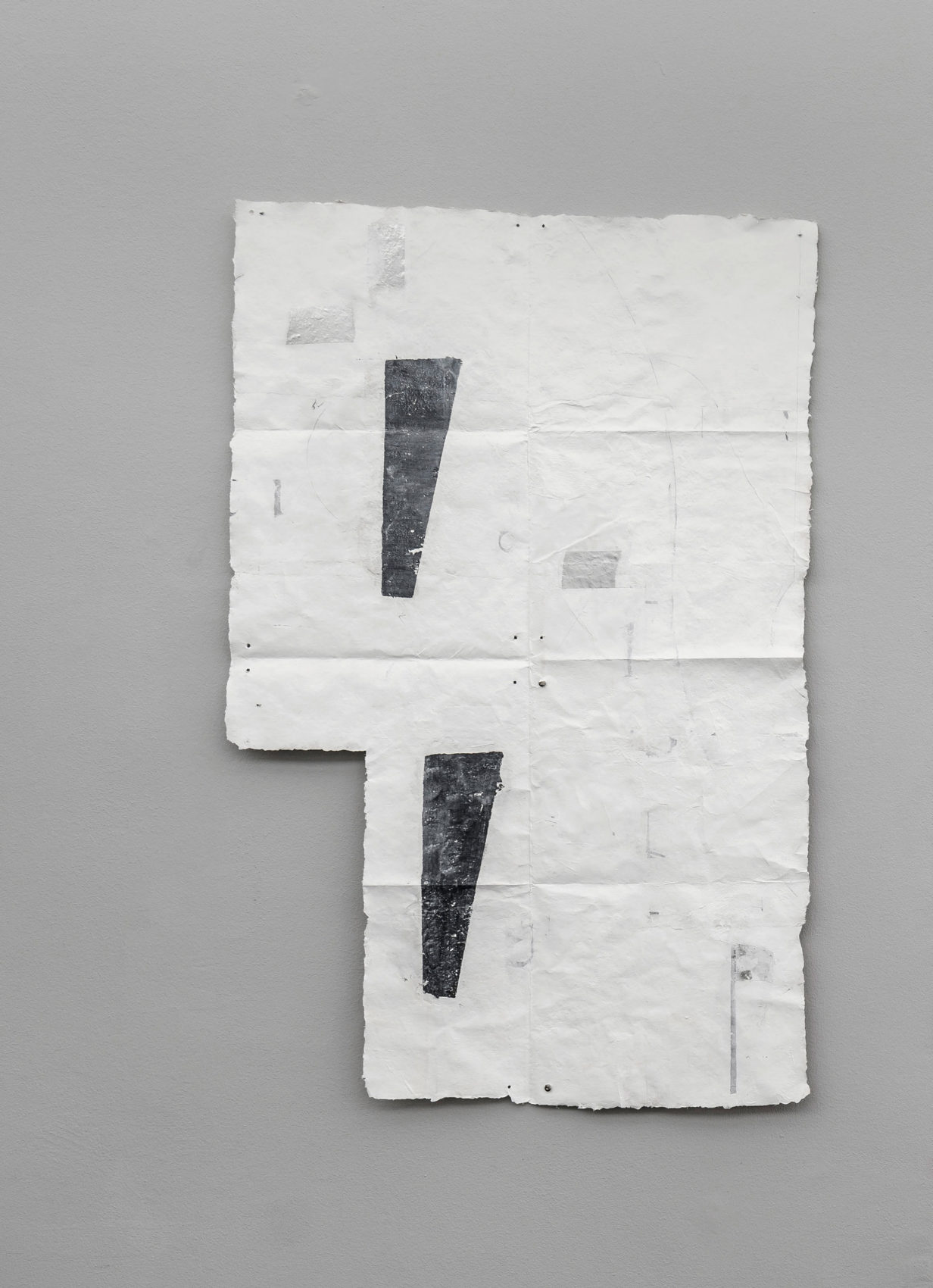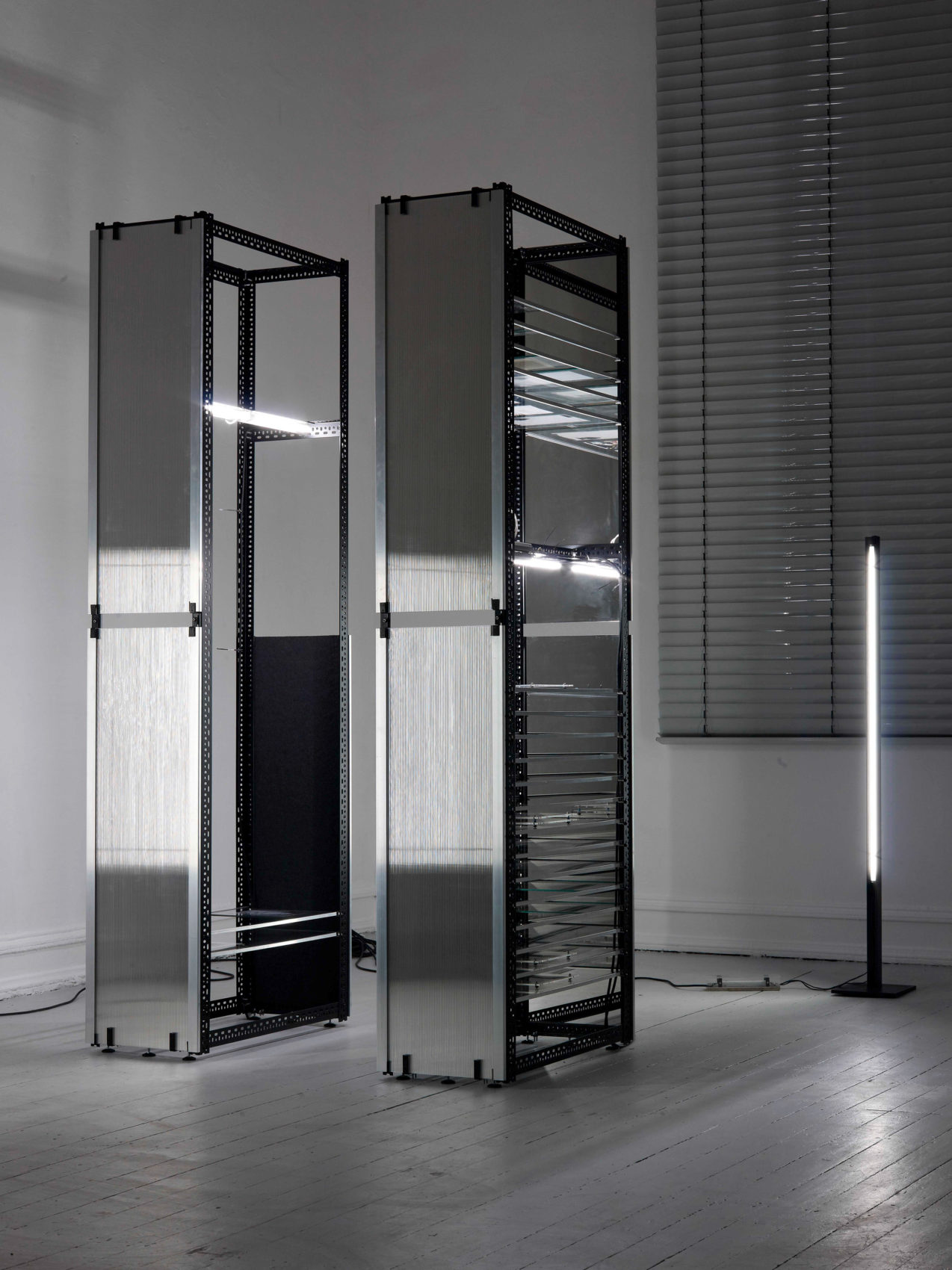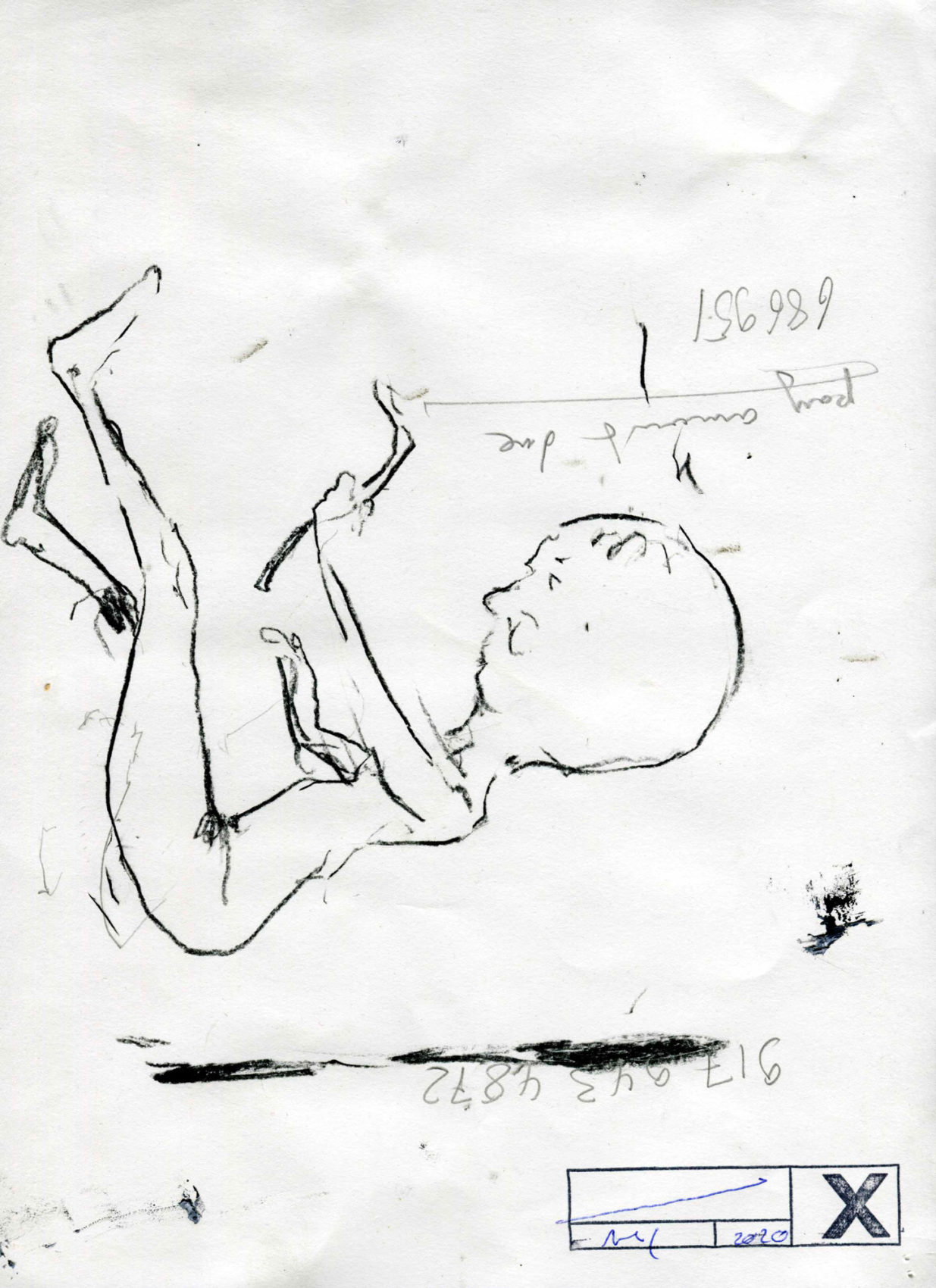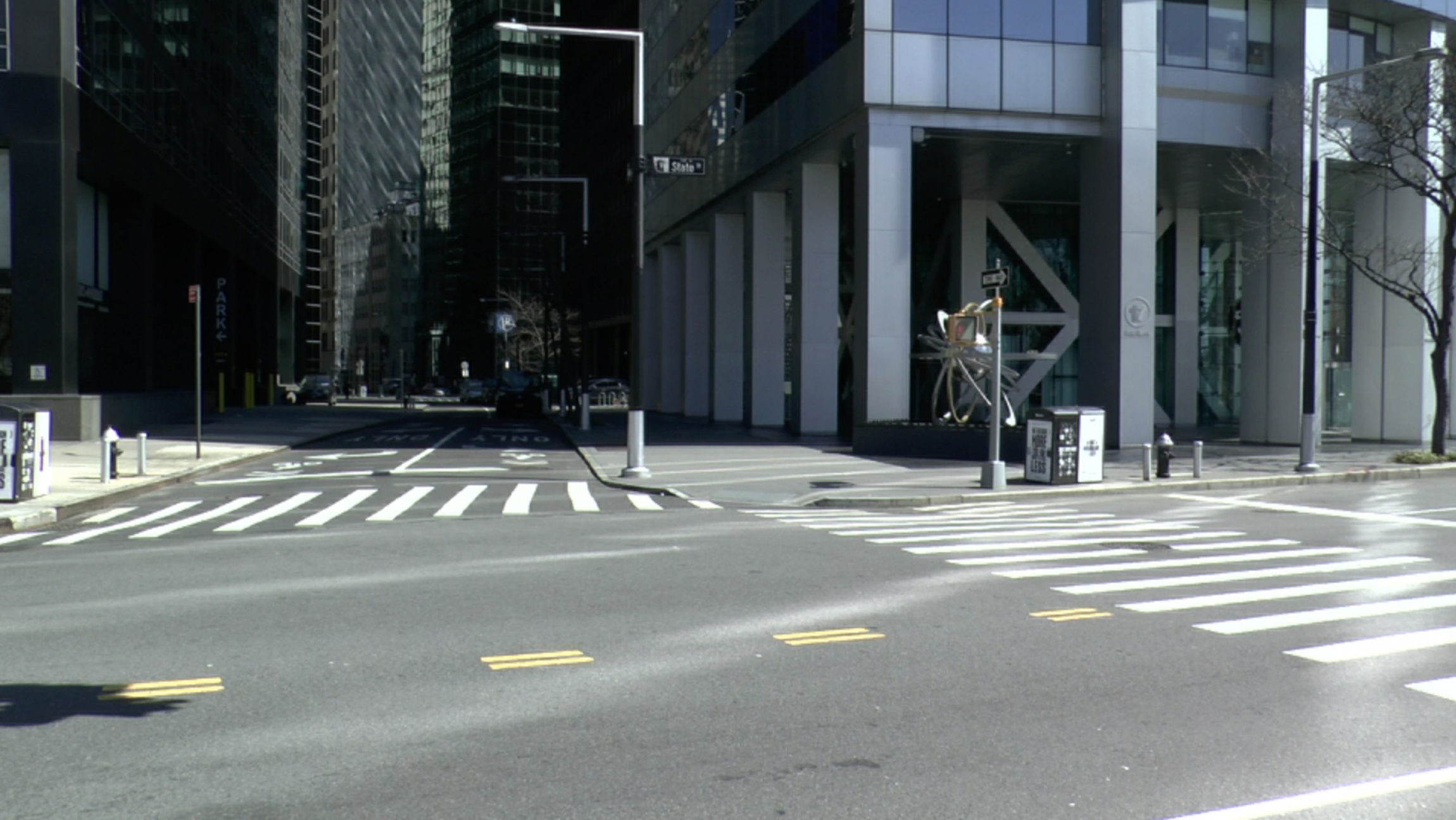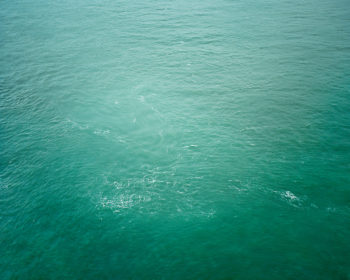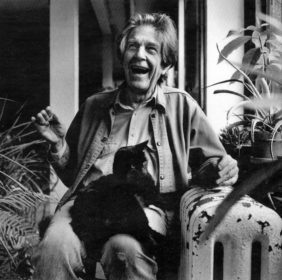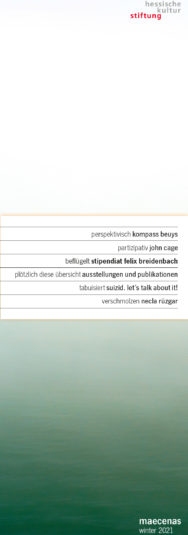scholarship holder felix breidenbach
Felix Breidenbach, who was born in Langen near Frankfurt in 1986, completed his artistic training in the master class of photo artist Andreas Gursky at the Kunstakademie in Düsseldorf. He now works across different media with elements of sculpture, painting, photography, drawing, and video art.
During his fellowship year in 2019-20 at the Foundation’s New York studio, he worked on the connection between urban history, modern architecture, and society on the basis of the theoretical considerations of the French cultural philosopher and sociologist Michel de Certeau on space. Towers and the (urban) labyrinth are two important points of reference in Felix Breidenbach’s work, which he condenses into cycles of emergence and decay, nature and culture.
(13) Prologue and the publication Foundation (13). In the video, to a tugging heartbeat rhythm by composer and artist Chris Dreier, we see the streets of New York, the sea and the docks swept empty by the Corona pandemic. Unlike the labyrinthine rhythmic cut of the video, the publication is layered into 13 stories. The artist associates his works with the mythological story of Daedalus and the fall of his son Icarus, from which he develops the motifs of flying and falling.
In New York Felix Breidenbach also tackled issues of sustainability in art production and on this basis developed self-imposed restrictions that help to determine the form of his works. Dr. Sylvia Metz interviewed the artist at his studio in Offenbach.
Sylvia Metz Your publication Foundation (13) has just been released by Distanz Verlag. What is it about?
Felix Breidenbach In short, it’s about very personal experiences over the last four years. My past, experiences I had during my studio fellowship in New York, and current events all correlate in a very strange way. For me, things come full circle in a way. That’s why the book is also structured like a set of files. You start with the most recent events and work backwards in time. At the same time, there is this analogy with a building. The chapters are stories, and you sort of read your way from the 13th floor down to the lobby.
Metz Alongside your own works, you’ve recorded texts by three authors.
Breidenbach Exactly, by Anna Lena Seiser, Pujan Karambeigi, and Franco Berardi. For me, all three of them played a very special role in the above-mentioned experiential process. I met Pujan Karambeigi and Franco Berardi in New York. Anna Lena Seiser I already knew from Düsseldorf from her time at the Kunsthalle. She visited me in New York. At the time, I was in the middle of a series of works on paper about people falling, and she “just happened” to have an old text piece of hers about the topic of falling with her. It connected in a way that almost didn’t feel like a coincidence at all.
Metz “Falling” is a particular theme of your works. I associate that mainly with a loss of control. Is that one of the fundamental ideas behind your works?
BreidenbachYes, that’s one hundred percent right: falling as a loss of control, as an intermediate state between something that we – supposedly – control, and an uncertain outcome. It’s a crisis situation. There is, for example, the medieval theme of the fallen angel, which again does not end with death but begins with birth. It begins, therefore, with the fall into earthly reality. Then we straighten up, as it were, and see ourselves in a world that we don’t understand, and we have to get our bearings within it …
Metz… and are actually falling the entire time? …
Breidenbach … yes, and we’re actually falling the entire time! I even think that, fundamentally, we never really gain control over our lives. That’s something we’re noticing particularly at the moment.
Metz With work titles such as Daedalus-Block or the video work 13 (Prologue)), which retells the story of Icarus, you link your works to Greek mythology. Why?
Breidenbach Ich finde die Geschichte von Daedalus sehr prägnant. Sie hat mir dabei geholfen, den gegenwärtigen Zustand unserer Realität zu beschreiben. Er wird als prototypischer Architekt und Erfinder geschildert. Aber mir kommt sein Charakter ganz paradox vor: Auf der einen Seite vertritt er hohe Ideale, auf der anderen Seite ist ihm für seinen Erfolg jedes Mittel recht. Diese ambivalente Haltung finde ich sehr passend, um unsere heutige westliche Gesellschaft zu beschreiben – diese Hybris, die in allem drinzustecken scheint. Die legt Daedalus auch als Architekt und Erbauer des Labyrinths für König Minos auf Kreta an den Tag.
Breidenbach I find the story of Daedalus very meaningful. It helped me to describe the present state of our reality. He is portrayed as a prototypical architect and inventor. However, to my mind his character seems quite paradoxical: On the one hand, he represents elevated ideals, but on the other he is willing to use any means for his success. I think this ambivalent attitude is very fitting to describe today’s Western society – this hubris that seems to be inherent in everything. Daedalus also demonstrates this as an architect and builder of the labyrinth for King Minos on Crete. For me, the labyrinth is a concept of urbanity. Getting lost as another form of loss of control. It’s just that we don’t always realize that we are in a labyrinth. It’s actually only from above, from the top of a tower as it were, that we can gain an overview of where we stand. This elevated view which, in a spiritual context, defines proximity to the divine, stands for insight and knowledge. At the same time, it harbors the risk of falling, or crashing. That brings us to Icarus, the son of Daedalus. Icarus flies too high, crashes and falls into the sea.
MetzHow does this tie in with your book? If I’ve understood correctly, the different themes all come together.
Breidenbach In my book, I didn’t want to end the story with this crash – I thought that would be too negative. That’s why the book starts with a figure rising from the sea: a kind of rebirth. Of course, the world hasn’t changed because of the crash, but it does prompt a kind of new start. Of course, you could accuse me of naivety here: I can’t undo history, injury, and injustice. But maybe at this point art also has the power to sketch out a utopia.
Metz What exactly might this utopia look like?
Breidenbach For me, the themes of flying, falling and a new beginning are archetypal; they harbor utopian potential. They are repeated constantly and thus hold a claim to universal validity in art. I try to give my observations on that a universal level. In my work, this then solidifies almost automatically.
Metz You frequently decide to present your works in a bulky way as now, for example, at Frankfurt’s Galerie Rundgaenger, where it blends wonderfully with the architecture. What interests you about these forms of presentation?
Breidenbach For me, it’s about responding to the site’s specifics. I don’t enter the space with a rigid concept, because the conditions play a role that always finds a way into my work. I aim to create a moment of vexation with the presentation. The works claim to function even without the art context. This is an eternal dilemma for me: To what extent can art develop validity or impact even without the context of the art establishment?
Metz Are you thereby also going against the so-called white cube?
Breidenbach Yes, I would go so far as to say that the white cube is just a concept, an ideal state that can no longer be represented architecturally – a place without any spatial information, without context. I think that would be the most interesting way of looking at something: taking away any kind of context. But that would also mean that you don’t know how you got there yourself, where the space is, to whom this space belongs.
Metz That’s interesting. I always see specific references to the space in your works. Observers may not see the place you are referring to, but you are very clearly examining architecture: the tower, floor plans or elevations, photographs of skyscrapers or urban space.
Breidenbach Architecture is more of a vehicle for me. I am interested in architecture per se, but in my work it plays more of an organizational role. I think of architecture more as a system, as a structural principle of contents that are related to each other.
Metz You tackle very current, but also fundamental themes: people’s positioning in society or the way we deal with nature. With you, though, the themes always combine with your artistic means. For example, you created the paper for your last works yourself, or you limit yourself in your color choices to black and white. Why?
Breidenbach That follows a relatively strict principle and corresponds to my personal attitude: If something isn’t necessary, then I leave it out. The raw material for the paper is wastepaper. It’s made from scraps, and the tools are also all there already. I bought almost nothing; everything is basically upcycled. As long as color doesn’t offer any added value in terms of content, it actually never appears in my work.
Metz What are you negotiating here with the colors black and white?
Breidenbach With these works, I’m starting very firmly with the drawing. For me, there’s something archaic about drawing. I see it as charcoal or something I’ve found applied to a background that is as light as possible. In order to have this graphic contrast, I stuck with black and white.
Metz From an art-historical perspective, drawing is often considered the original form and the basis of painting, and also of sculpture and architecture. What attracts you to drawing?
Breidenbach What I most appreciate with drawing is the immediate and the unconscious. I am virtually condemned to do the right thing. I can no longer revise a decision. There’s something absolute and honest about it – there’s no escape route. I feel like it therefore contrasts starkly with our visual world of today, in which the media function entirely differently.
Metz What exactly do you mean? Social media, digital formats, advertising, or cinematic storytelling?
Breidenbach Mainly, I’m referring to surfaces or effects that suggest something or disguise a lack of content because they provide an entertaining, perhaps aesthetic everyday moment. On closer inspection, though, a moment like that is not only entertaining, but also short-lived. There is no substance to it.
Metz Do you think permanence or a claim to eternity are themes of our changing society today?
Breidenbach These are questions that have occupied me for a long time but are now moving ever more to the foreground. That was a gradual process. Through experiences in New York specifically and the direct contrast with the time I spent in Nepal right before that, it grew even stronger. I have frequently looked at Asian philosophy and it’s an important point of reference for me. Compared to the Western way of thinking, there is no closed state there. It’s all about constant change, about accepting impermanence, but also about the beauty of impermanence. So I see it as constant change that endures. It’s hard to grasp, of course, without becoming arbitrary yourself. For me personally, this change emerges in the imperfection, the supposed error, but also in a certain spirituality. It turns against the closed work or even against a monolithic claim to eternity of things and conditions.
Metz If you look at your works, you quickly see that you are often concerned with empty spaces. Do you play with this concept of presence and absence in your work?
Breidenbach I think so, yes. For me, Miles Davis summed up this being present in absence: “Jazz is not the notes you play, it’s the notes you don’t play.” So it’s all about what you don’t show, what you don’t play, what you don’t express. For me, this idea has reached even another level, because in many areas of society right now we’re talking about restraint and self-denial renunciation. Renunciation is a fundamental attitude of mine, which perhaps also shows in the work.
Metz In formal terms, restraint and reduction are expressed very clearly in your works. On top of this, you reflect on the role of art in society. What thought processes or social debates do you aim to initiate?
Breidenbach I find it hard to influence larger social debates with my works, because there is no direct connection here. That would be desirable, of course – a direct connection between what happens in the art and the social or political body, because although a lot of important themes are addressed, there is a lack of social consequences. What I think, though, is that you have to start where you find yourself, first with yourself and then with the environment that you can reach. From there it can go further.
MetzHow exactly do you start? In the latest works, for example, I see the aspect of recycling. Aside from that, they can be folded and are easy to transport.
Breidenbach I’m trying to save on all resources. This approach includes, for example, recycling material and tools or minimizing the effort required for storage and transport. I then asked myself how I could actually make anything at all. How can I dovetail my art with the most sparing use of resources possible? I happened upon the idea of making the paper and tools myself out of trash. Even the water I use for this process is cooking or shower water from my household. It’s about using as few resources as possible exclusively for my art and then seeing what is feasible in the first place. Being able to then fold up the results of this production process and store them as efficiently as possible or even to send them was only logical for me.
MetzThis efficient approach proved to be very practical in 2020, right? Once the pandemic broke out in the spring, when you were in our New York studio, you were able to simply fold up your art and pack it in a suitcase. The problem was you had to leave the country within a week – that must have been a formative experience for you?
Breidenbach Absolutely. But at that point – here too – everything came together: The considerations about material and logistics suddenly found an application and proved to be practical and effective. There are currently also some interesting new considerations about how you can organize things differently in logistical terms on the art market. As I see it, that has to start with the art, that’s where it begins. It needs to be the artists that give thought to that: alternative packaging, deposit systems for art crates, the origin of the material. There are lots of details to think about there. There are also artists who are saying they won’t travel anymore. Without travelling, of course, I wouldn’t have had experiences like the one in New York. And I also don’t think that total renunciation, for example not travelling, is a solution. That’s why I’m far from criticizing other people.
Metz Thank you for talking to us Felix!
Breidenbach It was my pleasure.
Translation: Dr. Jeremy Gaines
